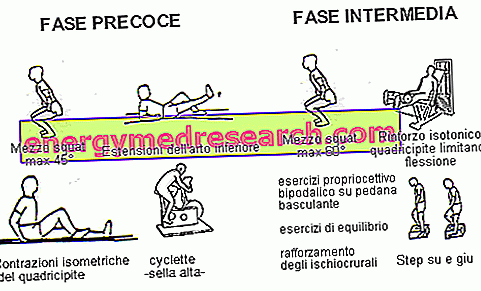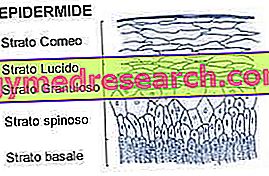


INTRODUCTION: meniscectomy involves the total or partial removal of the injured meniscus. In this regard, the surgeon will try to save as much as possible the meniscal integrity as the risk of degenerative changes in the knee is directly proportional to the amount of meniscus removed.
If you have undergone this type of surgery, waiting for new scientific discoveries, you can delay the degenerative processes of the joint as much as possible by following these three simple rules: keep your body weight normal, avoid the physical exercises that weigh on the joint, Prevent further knee injuries as far as possible.
The rehabilitative treatment has as its main objectives the re-acquisition of complete mobility and functionality of the knee.
Rehabilitation after meniscal injury is faster if the injured meniscus part is surgically removed. In this case the patient is usually able to walk already after one or two days after surgery and can return to normal activities after a few weeks (2-6 weeks depending on the extent and location of the lesion).
Instead, the rehabilitation process is longer if the meniscus is surgically repaired (suturing operation). In this case you will have to walk with the aid of crutches for four weeks and a complete return to sporting activity will be possible only after four / six months.
The rehabilitation protocol to be undertaken also varies based on numerous other factors. During surgery, the surgeon may in fact discover and repair other injuries that require a rehabilitation treatment that is diversified from the traditional.
For all these reasons the rehabilitation course must be established and planned with your doctor.
Let's look at an example of a rehabilitation program after meniscectomy.
Immediately after surgery, a special knee brace is applied to the patient, which can lock him in an extended position or allow small controlled movements.
The day after the intervention of the crutches are made available to the patient for walking. Other times the walking gait is allowed from the first day after the operation, on condition that the knee is blocked in extension by the guardian.
In the following days the brace can be removed, allowing limited flexion movements of the knee in relation to the tolerability of the movement (45-60 °). The goal of these early days will be the strengthening of the quadriceps muscle. In this regard, open kinetic chain exercises and, subsequently, a closed kinetic chain (half squat) can be performed.

Rehabilitation can be done safely in water, but only after the skin has healed (usually after 10-15 days).
In the intermediate phase (2-4 weeks after the operation) the rehabilitation program will continue increasing the intensity of the exercises. Thus resistance (isotonic) exercises will be introduced to strengthen the thigh muscles (both flexor and extensor) in relation to exercise tolerability. During the half squat it will be possible to reach 60 ° of flexion always based on the degree of recovery and individual sensations.
In this phase it is also important to improve the proprioception of the joint by working on a tilting footboard in bipodal support.
In the third and final phase (4-8 weeks) the work will continue with the isotonic and isokinetic strengthening of the whole lower limb. Closed kinetic chain reinforcement exercises of progressively increasing intensity will be introduced such as plyometric exercises, jumps, jumps etc.
The rehabilitation protocol after meniscal suturing, although it has the same objectives, is much slower than the previous one. Roughly the planned exercises are similar, but much more cautious and postponed from the initial period of forced immobility. The complete recovery will take place in this case only after three or four months from the intervention.



